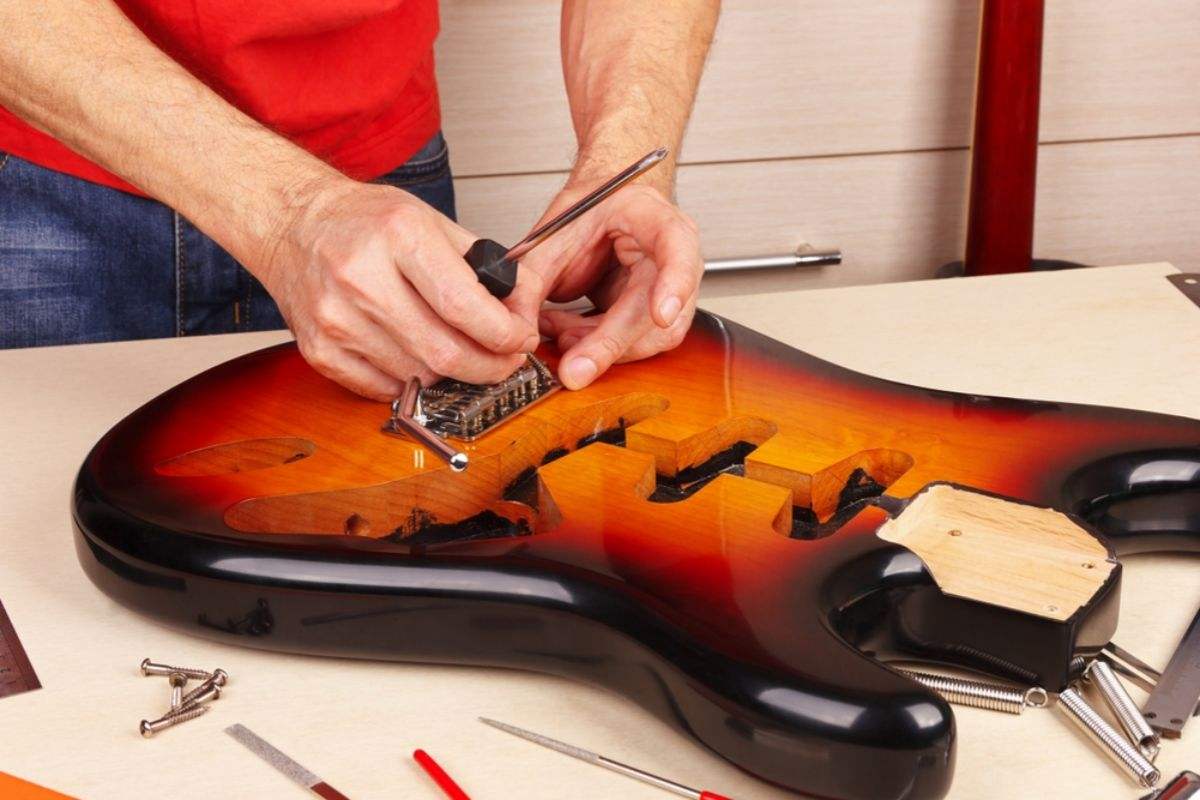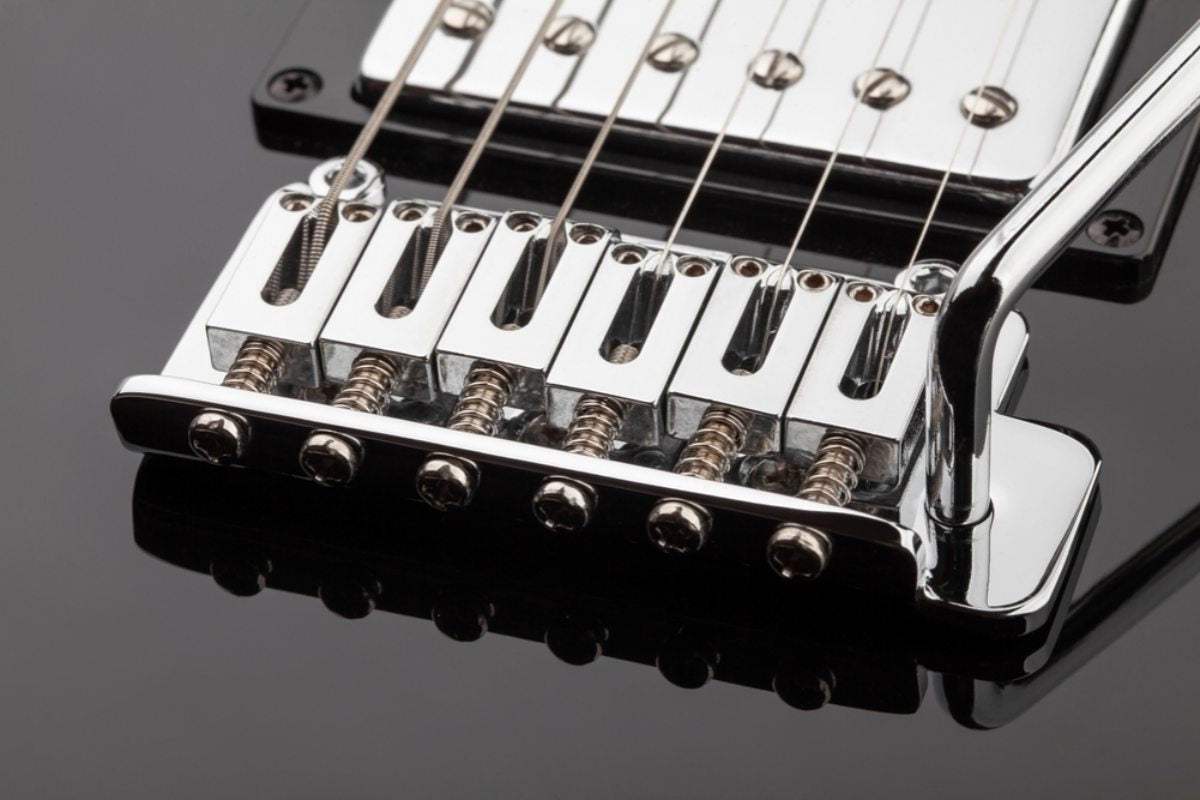Piezo pickups - some guitarists love them, some hate them. To be 100% honest, I am not a fan of using a piezo pickup to record acoustic guitars, but for playing either an acoustic, or a hybrid electric that you want to sound more 'acoustic' live, they can be fantastic.
So, let's start with why I don't like using them for recording. I personally think that an acoustic guitar (nearly) always sounds better if it is mic'ed - a pair of quality small diaphragm condensers (such as AKG C451s), one pointed towards the 12th fret, and one pointed towards the lower 'body' of the guitar is my preferred position. But a single large diaphragm condenser (AKG C414 or similar) also works a treat. In fact, even a humble Shure SM57 (or SM58) pointed at the region around the 12th fret sounds a lot better to my ear than a built-in piezo.
However, I did say "(nearly) always sounds better", there are exceptions. If you're after a more unique/interesting acoustic guitar tone, then using or even heavily manipulating a piezo pickup can give you exactly that. For example, if you're recording a song that needs a low-fi feel, heavily equalizing a piezo pickup (on either an acoustic or an electric guitar) can give the track exactly the acoustic guitar tone it needs.
But you might be new to all this, so let's go back to basics and find out…
What is a Piezo Pickup?
Pee-YAY-zoh pickups (for those not sure about the pronunciation) are a completely different design to the pickups found in most electric guitars, which are usually magnetic.
Both passive and active magnetic pickups work in the same way. The pickup has a series of or a single magnet that is wrapped in a wire coil. As a string vibrates, the magnetic field created by the coil and magnet/magnets translates the vibration into an electrical signal which is then amplified to create the sound of the guitar.
Piezo pickups work in a completely different way, first off, they are normally invisible because they are usually placed inside the bridge. Secondly, they don’t produce a magnetic field, like conventional pickups, but instead, they measure the pressure of the string vibrations to create an electrical current.
Another major difference is a much wider dynamic response, i.e. the difference between the loudest and quietest notes you play on the instrument. The active circuitry of piezo pickup systems usually compensates for this by including some kind of buffer amplifier and/or compression circuit which lowers the dynamic range, effectively limiting the difference between the volume of the loud and quiet notes, making the instrument much more playable.
A final plus for piezo pickups is that because there are no magnets, there is no electrical hum, which will come as a nice surprise for any player who normally uses higher powered single coil magnetic pickups.
What Do Piezo Pickups Sound Like on Electric Guitars?
Most players think that piezo pickups give an electric guitar a more acoustic-like tone, and even though this is true, it isn't the whole story. Yes, the guitar will sound more acoustic, but it isn't because the piezo is creating, replicating, or modelling an acoustic tone. The pickup is simply amplifying the 'true' tone of an electric guitar, not the tone that is usually captured and amplified by the magnetic pickups.
The sound produced by piezo pickups is usually brighter with less warmth than magnetic pickups, which allows for greater tonal clarity and a high degree of string articulation. They won't turn your electric guitar into an acoustic guitar tone-wise, but they will amplify the acoustic energy from your guitar, making it sound a lot more 'acoustic'.
How to Get the Best Sound out of Piezo Pickups
As mentioned, for recording, I much prefer to use a microphone than rely on piezo pickups, even those in higher end acoustic guitars. But if you're playing live, a microphone is not only going to get in the way, but in most cases, is unnecessary.
Whether you're playing an acoustic with a piezo, or a hybrid electric featuring both magnetic pickups and a piezo, getting the best sound you can without the hassle of setting up a microphone, having to constantly stand next to it, and coping with the inevitable feedback issues, has to be the way to go. And the easiest (and cheapest) way to compensate for the slight issues caused by piezo pickups is by using an Equalizer pedal in between your piezo and the amplifier.
You will need a 7 or even 10-band equalizer, such as the Boss GE-7 which is my go-to equalizer pedal - affordable (especially second hand), great sounding and built like a tank. Use it to dial the bass frequencies which are missing from most piezo systems back in and to decrease the higher overtones and sibilance found in the top end frequencies.
Another great option for getting a fantastic acoustic guitar sound from a piezo is by using a body resonance pedal. Pedals such as TC Electronic's BodyRez couldn't be simpler to use, just adjust the single knob to taste to restore the feel of the body of the instrument. You can also use it when recording directly into an interface which brings us nicely to…
The Best Way to Record using a Piezo Pickup
If you don't have a decent microphone or a quiet location needed for a quality recording then you are going to have to use the piezo pickup in your guitar directly into your audio interface.
Don't worry, good results can be achieved this way, the secret being to use a good equalizer or channel strip afterward to give you a great acoustic tone. You can also use some subtle compression to bring the sound together and a little delay or reverb if, for example, you want the sound to work around a vocal.
Wrapping It Up
I could have taken a deep dive into the history and development of piezo technology since its discovery all the way back in the 1880s, or the use of piezo pickups in instruments as varied as mandolins and harp guitars, but instead, I decided to take a more hands-on approach to bring you information that is more relevant to the gigging and recording guitarist.
I hope that you now have a better understanding of piezo pickups and how to use them to get the best possible sound for your next concert, tour, or recording.
If you like this article, please share it!
Be sure to join our FB Group Guyker Guitar Parts VIP Group to share your ideas! You can also have connections with like-minded guitar players, Guyker updates as well as discounts information from our FB Group.





